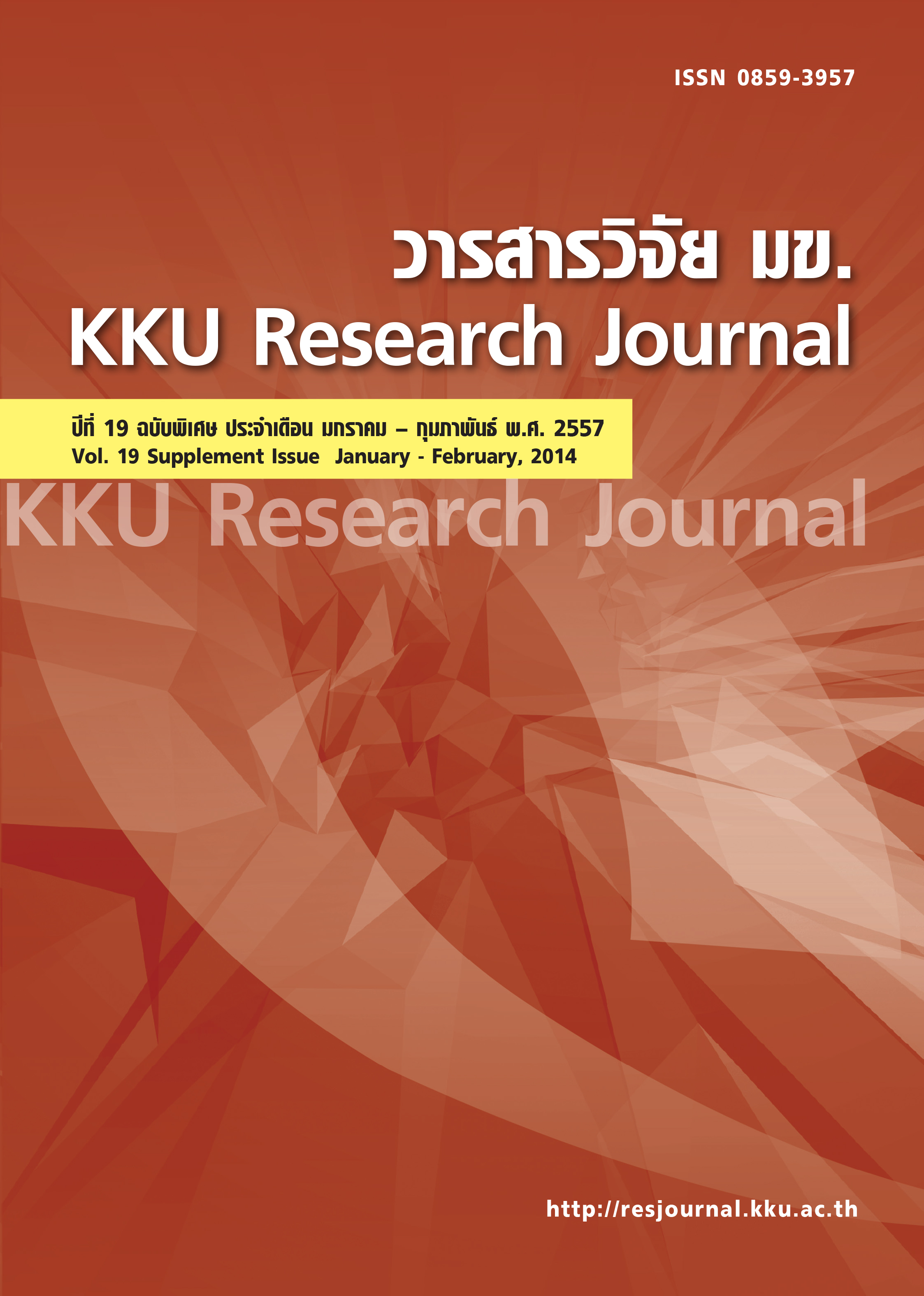Polyhydroxybutyrate (PHB) production by Alcaligenes eutrophus NCIMB 11599 from low-cost substrate as carbon source
Main Article Content
Abstract
Poly-3-hydroxybutyrate (PHB), homopolymers of hydroxybutarate, are wildly applied as biodegradable substitutes of the conventional petrochemical-based plastic due to its similar properties to polypropylene. The problem of the commercial application of PHB is its high production cost due to the cost of substrate (mainly carbon source). In this work, the effect of different cheap carbon sources (coconut juice, sugar cane juice, palmyra palm sugar, brown sugar, palm sugar and pineapple peel juice) on the production of PHB was assessed. Alcaligenes eutrophus NCIMB 11599 was cultivated in 250 ml Erlenmeyer flasks at 37oC, 120 rpm for 24 h. Plam sugar and brown sugar showed the high potential for PHB synthesis with the PHB content at 1.93 and 1.90 %, respectively. The effect of carbon and nitrogen sources on PHB production was also investigated. The maximum PHB content (5%) was obtained from 2 g/ l palm sugar but ammonium sulphate was not added in the medium. A maximum specific growth rate (0.175 h-1 ) and PHB productivity (0.0035 g/(l•h)) were calculated in a 5 l fermenter.
Article Details
How to Cite
Phathipchotikun, R. (2017). Polyhydroxybutyrate (PHB) production by Alcaligenes eutrophus NCIMB 11599 from low-cost substrate as carbon source. Asia-Pacific Journal of Science and Technology, 19, 53–59. retrieved from https://so01.tci-thaijo.org/index.php/APST/article/view/83101
Section
Research Articles


